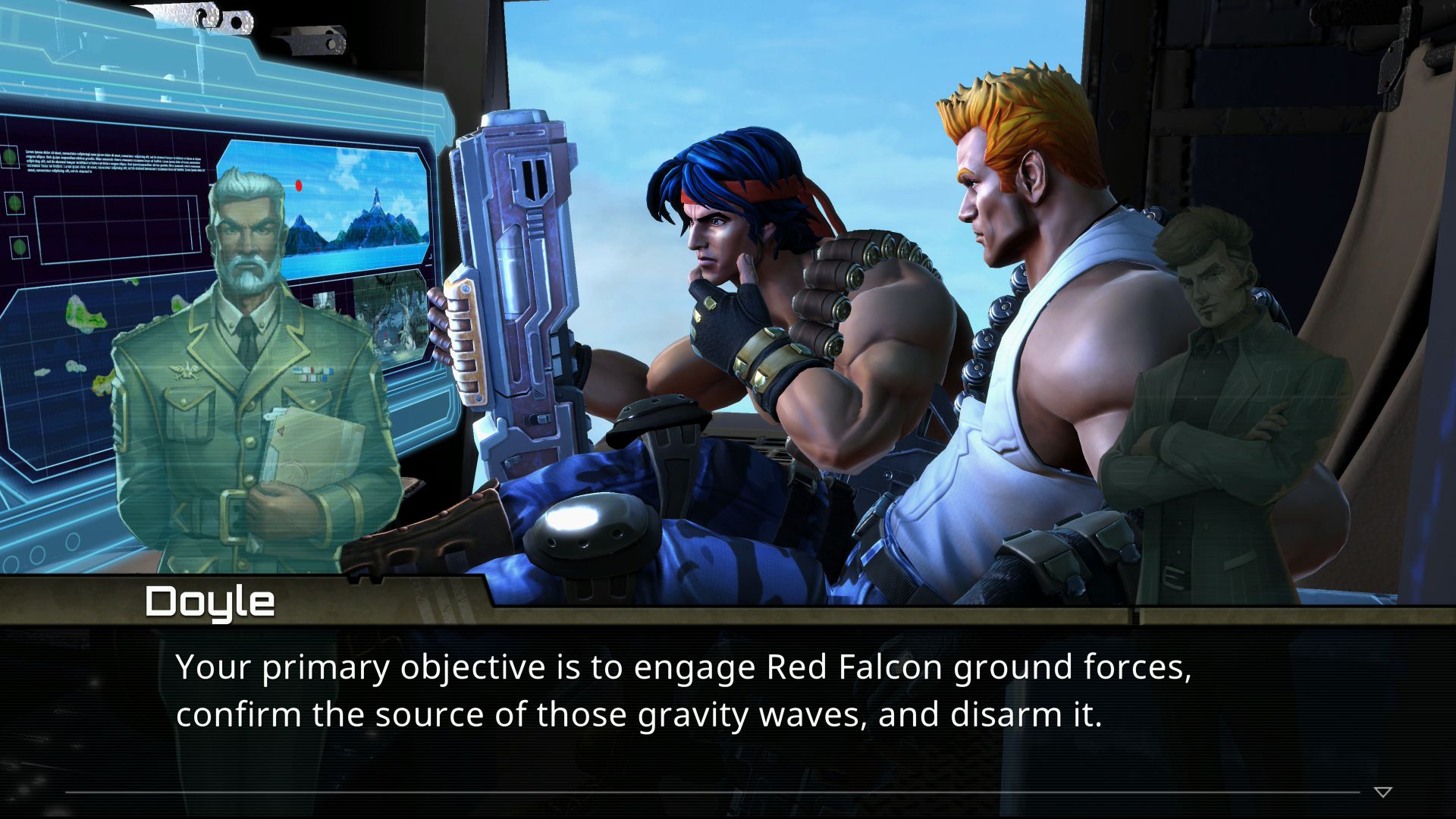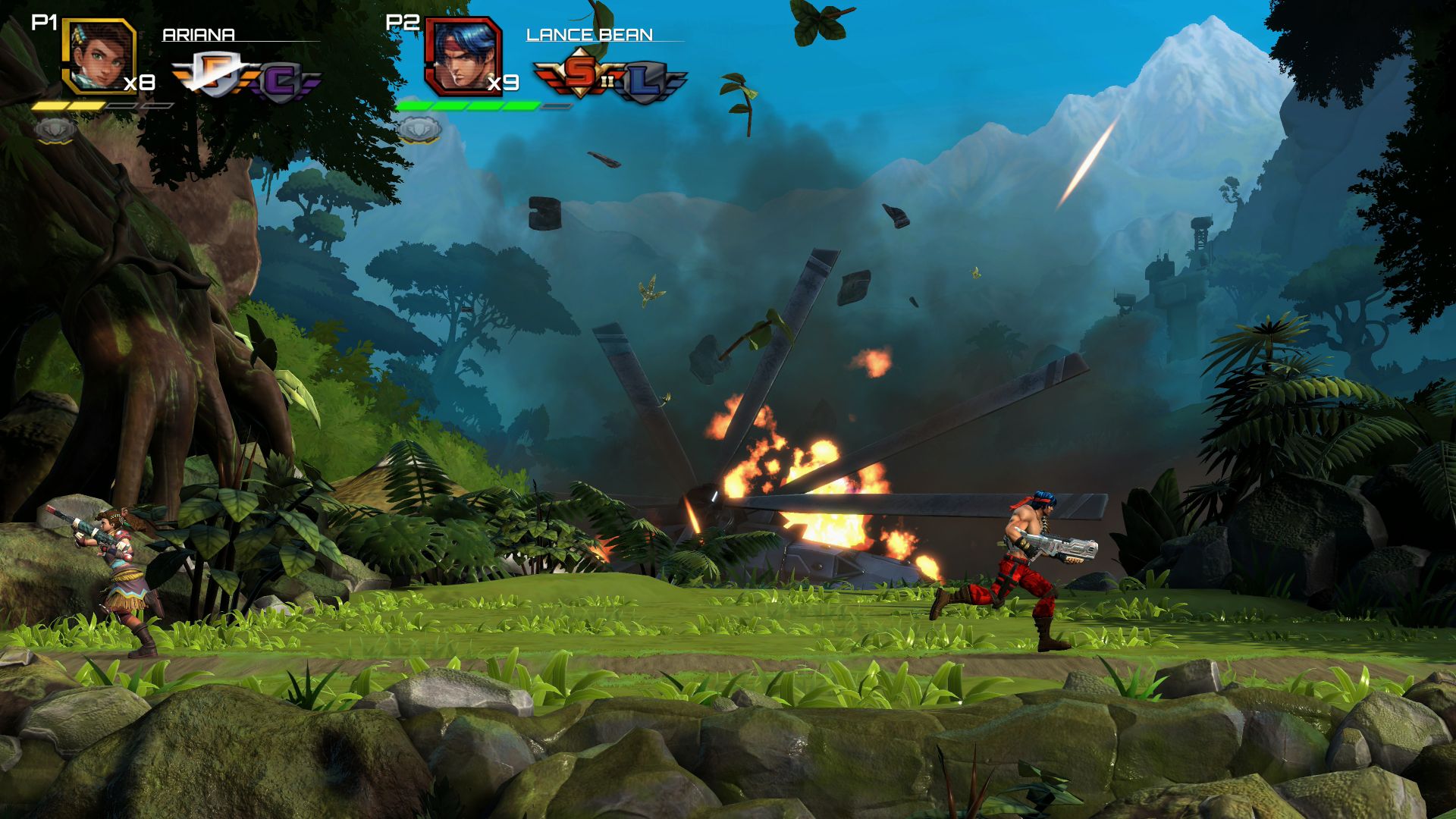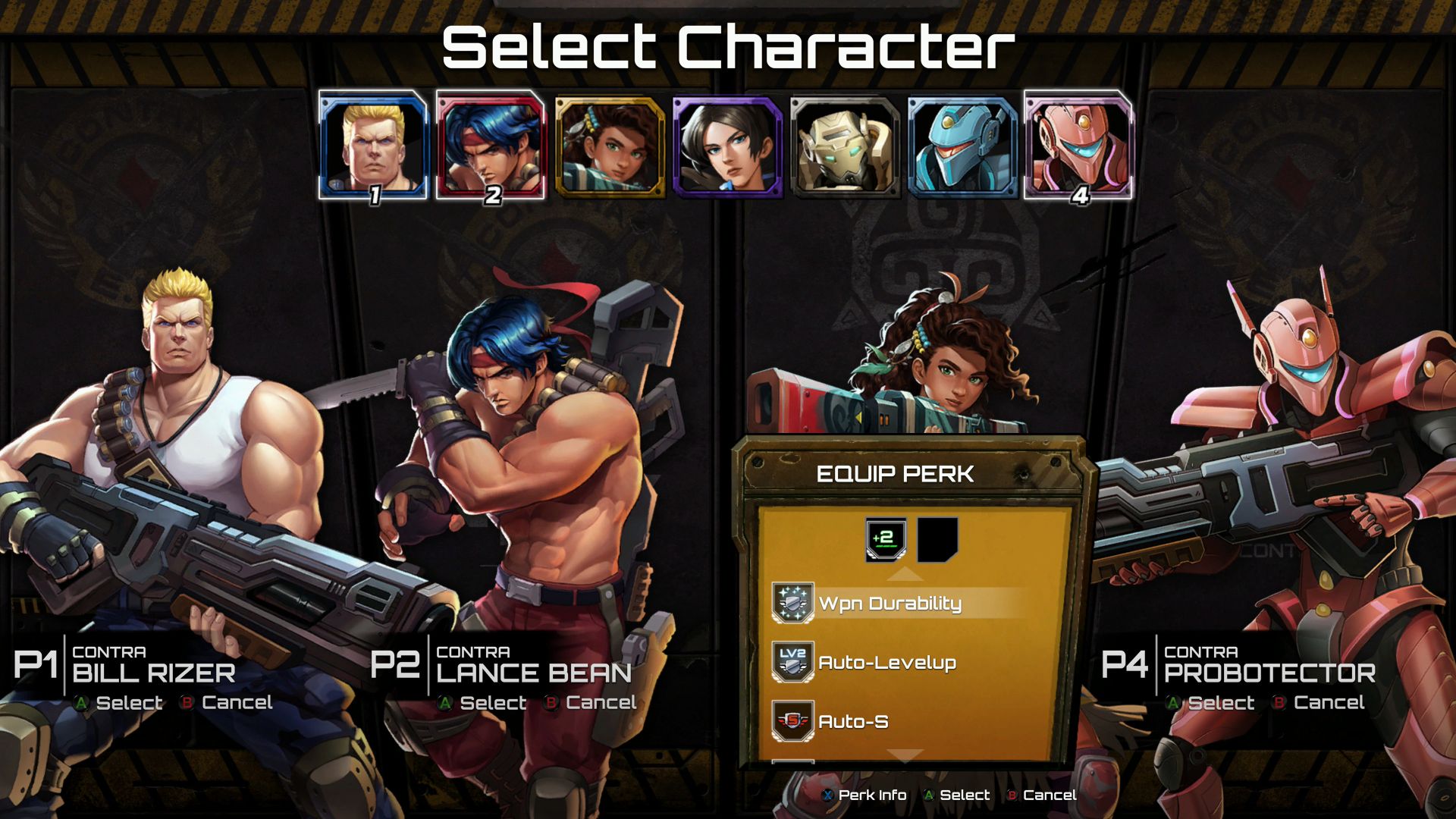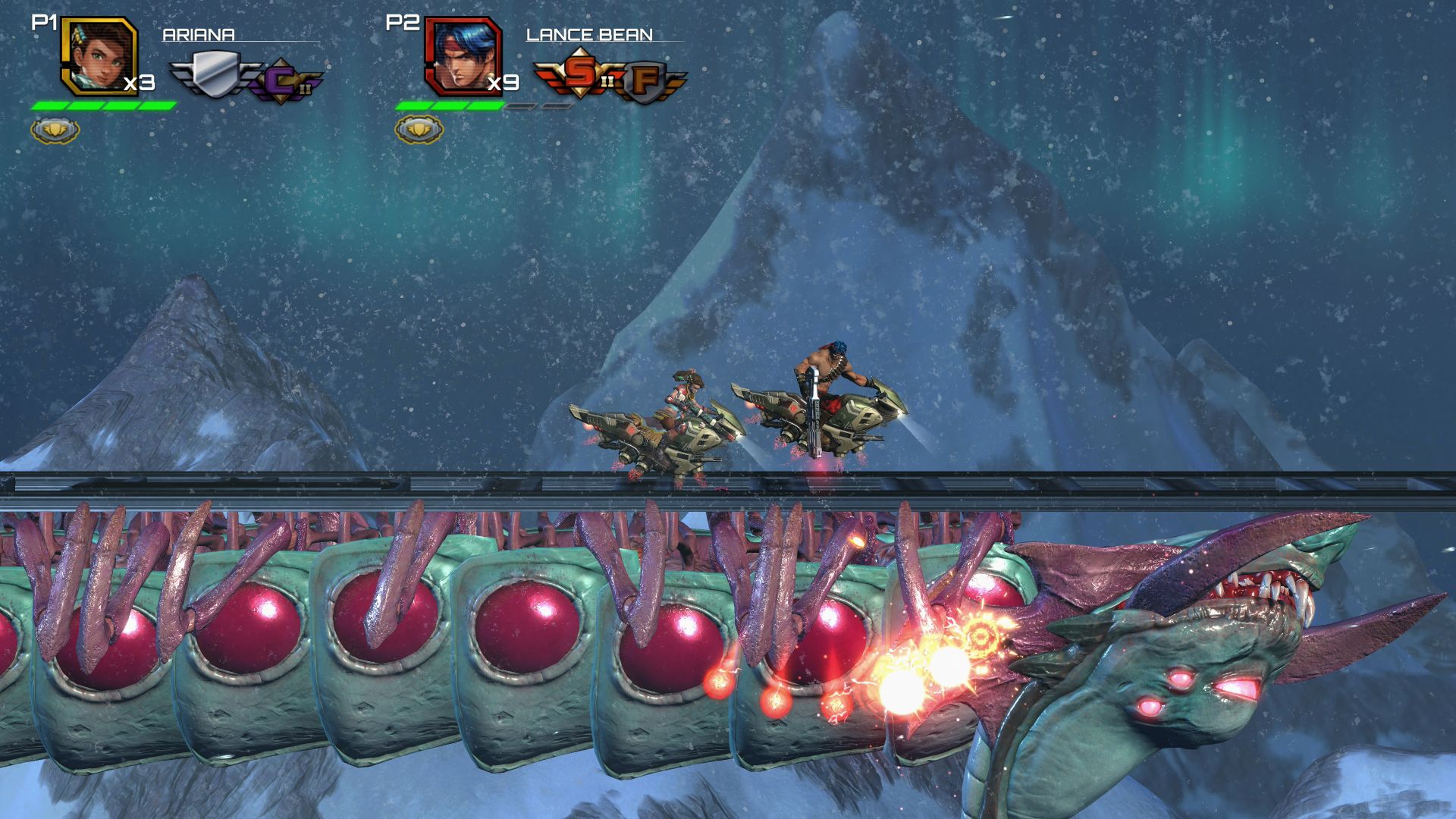The Contra series of run-and-gun shooters has persisted since the debut of the original arcade game in 1986. Naturally, this includes some ups and downs, with 2019’s Contra: Rogue Corps recently failing to win over critics and fans. This led some to question whether Contra: Operation Galuga, developed by WayForward and published by Konami, would be a return to form. With Tomm Hulett as director and a seemingly substantial budget for a 2.5D game, Operation Galuga certainly qualifies as an “up.” In fact, it’s one of the best games in the series.
While Operation Galuga initially looked like a remake of the original Contra, it has turned out to be a “rebootquel” instead. This one retells the story of the first game with much greater fidelity, borrowing environments and gameplay elements. At the same time, however, it’s really a brand-new game. The levels are totally different, lots of new characters and mechanics are present, and any returning bosses behave much differently than they did before. Thus, Operation Galuga is an excellent entry point for new players while also being a brand-new, faithful sequel for gamers who grew up playing the 2D Contras.

Operation Galuga offers three game modes: Story, Arcade, and Challenge. Story mode, which supports 2-player local co-op, is where players will probably want to start, especially since Story progress is required to unlock some content in Challenge mode and the Perks shop.
Story mode opens with a 3D introduction that depicts the arrival of Red Falcon’s forces on the island of Galuga, followed by the subsequent entrance of the Contra team. While some of the characters are depicted as 2D portraits, they’re all fully voiced by high-quality actors like Steve Blum. Most of the cinematics have good-looking in-engine 3D components to them as well, so they don’t come across as low budget (until the ending). Between the action segments of each stage, Bill Rizer and Lance Bean, the series’ iconic pair of heroes, will interact with other members of their team, a handful of friendly NPCs, and some talkative but less welcoming representatives of Red Falcon. The narrative doesn’t include much in the way of characterization, but it’s interesting enough and lays some groundwork for future titles. Regrettably, the actual ending is told through a motion comic rather than the in-game engine used for every other cinematic. It feels out of place and looks cheap despite the exciting events depicted within.

Arcade mode features the same 8 stages as Story but without the cinematics, and levels must be played in a linear fashion. At least one moment plays oddly without the presence of the narrative: the helicopter crash in Stage 1. The screen stops scrolling, and the protagonists just stand around waiting for the crash; it’s a slower moment than you’d find in the 16-bit games. Still, overall, Arcade mode offers a faster pace than Story mode, and it will surely be where players spend most of their subsequent playthroughs after clearing Story mode. Arcade also ups the co-op player count to 4 players and supports the alternate unlockable soundtracks, further encouraging replay.
Initially, only Bill and Lance are playable in Story mode, whereas Arcade also offers a pair of Probotectors (androids created for the European localizations of the original Contra games) to choose from. After clearing Story, a total of six additional characters will unlock or become available to unlock in the Perk shop. The four starting characters all share the same two abilities (double jump and dash), but the additional characters have unique powers like charge shots and grappling hooks. Basically, gamers can play it safe with the starting cast (as I prefer to do) or mix things up with the remaining warriors.

One of Operation Galuga’s best qualities is that it really nails the gameplay of the classic Contras. Running, gunning, and crouching all feel exactly as they should. Locking in place to aim is present, thankfully, even when riding hoverbikes (an improvement over Contra III). Players can still carry and switch between two weapons, though Contra III’s ability to spin while firing both weapons at once didn’t make the cut here.
The weapons system resembles that of past games but with some welcome upgrades. Weapons pods still fly across the screen at specific locations and drop weapons when shot. Players can now earn and store a spare weapon pod for emergencies – an improvement over the undercooked pod system in WayForward’s previous run-and-gun, Spidersaurs. Like that game, collecting two copies of a weapon will upgrade that weapon, and getting hit will cause the weapon to revert to Level 1 status. Unique to Operation Galuga, players can forego a weapon’s Level 2 status to perform an Overload, a weapon-specific special move. You’ll probably want to keep weapons at Level 2 most of the time, but whenever a duplicate of an upgraded weapon comes along, that’s a great time to use the Overload before collecting the duplicate.
